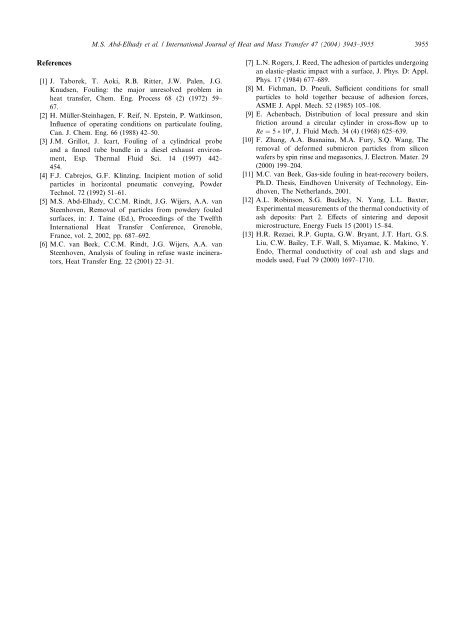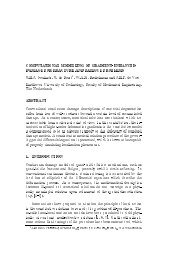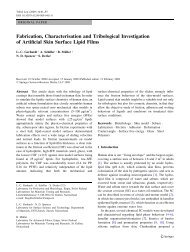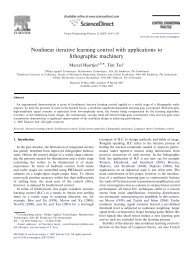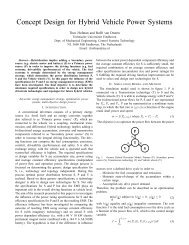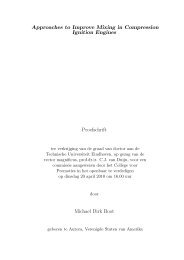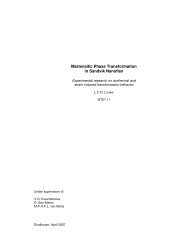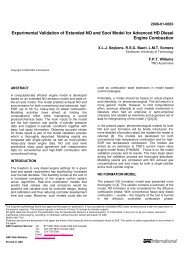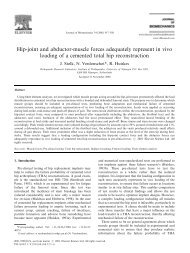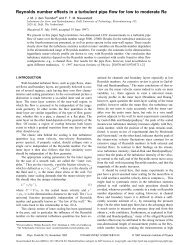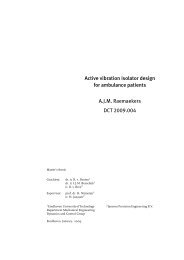Minimum gas speed in heat exchangers to avoid particulate fouling
Minimum gas speed in heat exchangers to avoid particulate fouling
Minimum gas speed in heat exchangers to avoid particulate fouling
Create successful ePaper yourself
Turn your PDF publications into a flip-book with our unique Google optimized e-Paper software.
M.S. Abd-Elhady et al. / International Journal of Heat and Mass Transfer 47 (2004) 3943–3955 3955References[1] J. Taborek, T. Aoki, R.B. Ritter, J.W. Palen, J.G.Knudsen, Foul<strong>in</strong>g: the major unresolved problem <strong>in</strong><strong>heat</strong> transfer, Chem. Eng. Process 68 (2) (1972) 59–67.[2] H. M€uller-Ste<strong>in</strong>hagen, F. Reif, N. Epste<strong>in</strong>, P. Watk<strong>in</strong>son,Influence of operat<strong>in</strong>g conditions on <strong>particulate</strong> foul<strong>in</strong>g,Can. J. Chem. Eng. 66 (1988) 42–50.[3] J.M. Grillot, J. Icart, Foul<strong>in</strong>g of a cyl<strong>in</strong>drical probeand a f<strong>in</strong>ned tube bundle <strong>in</strong> a diesel exhaust environment,Exp. Thermal Fluid Sci. 14 (1997) 442–454.[4] F.J. Cabrejos, G.F. Kl<strong>in</strong>z<strong>in</strong>g, Incipient motion of solidparticles <strong>in</strong> horizontal pneumatic convey<strong>in</strong>g, PowderTechnol. 72 (1992) 51–61.[5] M.S. Abd-Elhady, C.C.M. R<strong>in</strong>dt, J.G. Wijers, A.A. vanSteenhoven, Removal of particles from powdery fouledsurfaces, <strong>in</strong>: J. Ta<strong>in</strong>e (Ed.), Proceed<strong>in</strong>gs of the TwelfthInternational Heat Transfer Conference, Grenoble,France, vol. 2, 2002, pp. 687–692.[6] M.C. van Beek, C.C.M. R<strong>in</strong>dt, J.G. Wijers, A.A. vanSteenhoven, Analysis of foul<strong>in</strong>g <strong>in</strong> refuse waste <strong>in</strong>c<strong>in</strong>era<strong>to</strong>rs,Heat Transfer Eng. 22 (2001) 22–31.[7] L.N. Rogers, J. Reed, The adhesion of particles undergo<strong>in</strong>gan elastic–plastic impact with a surface, J. Phys. D: Appl.Phys. 17 (1984) 677–689.[8] M. Fichman, D. Pneuli, Sufficient conditions for smallparticles <strong>to</strong> hold <strong>to</strong>gether because of adhesion forces,ASME J. Appl. Mech. 52 (1985) 105–108.[9] E. Achenbach, Distribution of local pressure and sk<strong>in</strong>friction around a circular cyl<strong>in</strong>der <strong>in</strong> cross-flow up <strong>to</strong>Re ¼ 5 10 6 , J. Fluid Mech. 34 (4) (1968) 625–639.[10] F. Zhang, A.A. Busna<strong>in</strong>a, M.A. Fury, S.Q. Wang, Theremoval of deformed submicron particles from siliconwafers by sp<strong>in</strong> r<strong>in</strong>se and me<strong>gas</strong>onics, J. Electron. Mater. 29(2000) 199–204.[11] M.C. van Beek, Gas-side foul<strong>in</strong>g <strong>in</strong> <strong>heat</strong>-recovery boilers,Ph.D. Thesis, E<strong>in</strong>dhoven University of Technology, E<strong>in</strong>dhoven,The Netherlands, 2001.[12] A.L. Rob<strong>in</strong>son, S.G. Buckley, N. Yang, L.L. Baxter,Experimental measurements of the thermal conductivity ofash deposits: Part 2. Effects of s<strong>in</strong>ter<strong>in</strong>g and depositmicrostructure, Energy Fuels 15 (2001) 15–84.[13] H.R. Rezaei, R.P. Gupta, G.W. Bryant, J.T. Hart, G.S.Liu, C.W. Bailey, T.F. Wall, S. Miyamae, K. Mak<strong>in</strong>o, Y.Endo, Thermal conductivity of coal ash and slags andmodels used, Fuel 79 (2000) 1697–1710.


